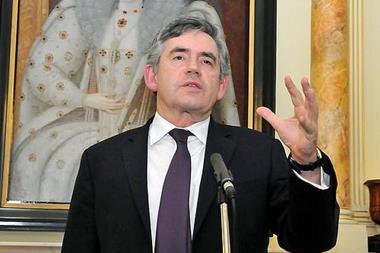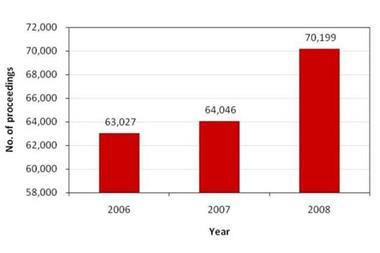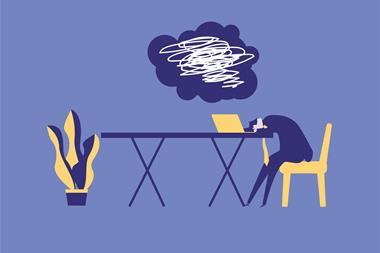In today’s world product safety is paramount. Nathan Skinner sets the scene for this special report on product recall
The biggest worry for any responsible manufacturer is to make sure they only release safe products onto the market. Maintaining product integrity is critical in order to safeguard a company’s brand and reputation. Sadly, despite this imperative deadly mistakes can happen. Recent high profile examples of instances where unsafe products have been released onto the market, occasionally with horrifying consequences, include melamine-contaminated milk in China, dioxin tainted pork in Ireland and salmonella in US pistachios. Risk managers should consider a number of issues.
The world is changing
Once upon a time organisations managed the majority of their supply chain within the boundaries of their own business. Now outsourcing removes ownership of certain production processes which can increase the risk of contamination. Manufacturers are increasingly sourcing ingredients, components and packaging from further afield where they have less control over the supply chain and legislation may not be wholly in line with that of more developed markets in Europe and the US. Also failure to effectively control supply chain security can lead to counterfeit goods entering the market. Such exposures have the potential to significantly and permanently damage an organisation’s brand and reputation.
Reputation is all
When you add up the costs of the transportation, publicity, refunds and other factors the financial consequences of a product recall can be very severe but the impact on an affected company’s reputation lingers even longer in 2007. Mattel’s Fisher Price brand clocked up blanket media coverage when it was forced to make a series of recalls covering millions of potentially dangerous Chinese manufactured toys.
A recent Harris Interactive poll found that following a recall for health and safety reasons 55% of customers would ‘temporarily purchase another brand and then purchase the recalled brand once it was safe,’ 15% would ‘purchase another brand and never purchase the recalled brand again’ and 21% would ‘avoid using any brand made by the manufacturer of the recalled products.’ The Mattel toy recall dealt untold damage to the reputation of all Chinese manufacturers and importers. Following the incident many Chinese manufacturers were obliged to boost their quality control measures. Nevertheless, according to RAPEX, the pan-European notification system, China remains the biggest source of imported consumer goods which trigger safety alerts across Europe.
Beware the regulator
Poorly handled recalls and a political focus on the cost to society of unsafe products have encouraged regulators to step in. Ever since the BSE crisis revealed lamentable production processes in the food industry, European food and drink companies have been beholden to significantly tighter requirements and obligations. Further, the Mattel recalls of 2007 promoted a major review of consumer product safety regulations across the world, and since then major steps have been taken by the EU, US and China to govern safety, particularly in relation to children’s toys.
“Consumers and authorities are increasingly aware of potential hazards
In the US, following a widespread pistachio nut recall, the Food and Drug Administration (FDA) issued a strict warning to all food and drink manufacturers that sloppy manufacturing processes would no longer be tolerated. Dr David Acheson, associate commissioner for foods at the FDA, told the New York Times: ‘The food industry needs to be on notice that the FDA is going to be much more proactive and move things far faster. We’re going to try to stop people from getting sick in the first place, as opposed to waiting until we have illness and death before we take action.’
Still, these measure pale in comparison to the death sentence handed down by a judge in China to two men involved in the contaminated milk scandal.
Consumers are savvy
Consumers and authorities are increasingly aware of potential hazards. And consumer groups are also more litigious than ever which means the cost of potential lawsuits can be huge. Merck which was accused of delaying the recall of its Vioxx painkiller drug, which was found to increase the chances of a heart attack, faced legal fees of $500m a year to defend against lawsuits. In the end the company offered to pay US$4.85bn to settle 26,000 lawsuits. The total cost of the Vioxx problem was estimated at around US$8bn.
Communication is king
Getting the right message across to the public about the level of risk is vital in handling a potential incident. Faced with a crisis situation businesses need to develop a clear communications strategy aimed at balancing the public’s perception of risk. In the days of 24-hour news coverage the media can get hold of a news story very quickly so businesses need to act fast if they want to reassure the public.
Public reaction to threats and dangers is based on complex psychological and cultural emotions. What this means is that risk communication with the public needs to be clear, consistent and easy to understand. If product safety is compromised and the company underplays the incident it is in danger of hampering a recall effort, increasing risk to the public and damaging its own reputation. But if it overplays the risk it will have trouble winning over the public’s trust ever again.
The wide range of exposures that affect product safety should encourage risk managers to examine the quality and depth of their product recall crisis management plans. In this StrategicRISK special report a cross section of professionals will discuss strategies to help them do so.
Postscript
Nathan Skinner is associate editor, StrategicRISK



















No comments yet